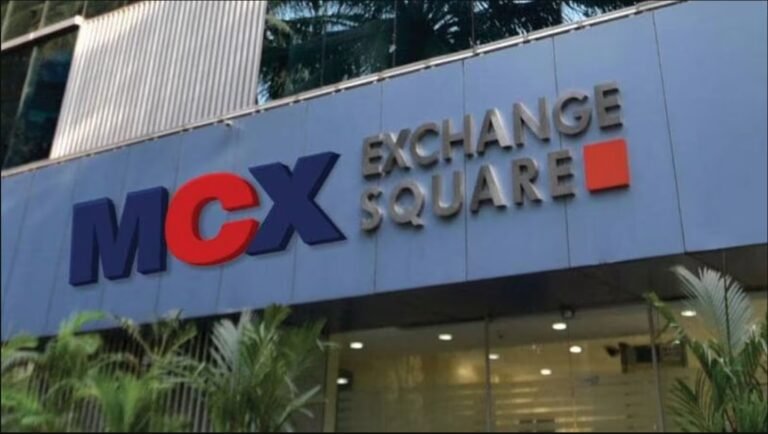While MCX and BSE demonstrate robust return on average equity performance, MCX’s heavy dependence on unpredictable commodity markets creates sustainability questions, especially during periods of reduced crude oil price fluctuations.
SEBI Chairman Removes IPO Barriers for National Stock Exchange
Exchange stocks have captured market attention following Securities and Exchange Board of India chairman Tuhin Kanta Pandey’s weekend statement that no obstacles remain for the National Stock Exchange of India’s initial public offering. This development has brought renewed focus to the two major listed exchange players: Multi Commodity Exchange of India Ltd (MCX) and BSE Ltd.
Exchanges: A High-Margin Business Model
The exchange business model represents one of the most lucrative sectors in financial markets, typically operating as duopolies or triopolies. These businesses consistently deliver robust EBITDA margins exceeding 50% across most cases. The margin expansion potential remains strong due to the highly scalable nature of operations, requiring minimal incremental capital expenditure and operating expenses. Consequently, these companies maintain impressive return on average equity (RoAE) figures.

Recent Market Performance and Analyst Coverage
UBS and several other brokerages published research reports on MCX on June 24, with UBS establishing a target price of ₹10,000. The stock responded positively, surging over 5% and reaching a new 52-week high of ₹8,808 following these reports.
According to Bloomberg consensus estimates, BSE shares currently trade at 39x their FY27 earnings per share, while MCX commands a higher multiple of 49x. Despite this valuation gap, both exchanges are projected to achieve similar RoAE of 37% for FY27.
Evaluating MCX’s Premium Valuation
Justification for Higher Multiples
Market analysts, including an unknown professional who preferred not to reveal their identity, cite several factors supporting MCX’s valuation premium over BSE:
- Volatile commodity prices driven by ongoing geopolitical tensions
- New product launches, including the transition from bi-monthly to monthly bullion contracts
- Diversification initiatives into electricity derivatives markets
Revenue Concentration Risks
However, the earnings profile of commodity exchanges tends to be more volatile compared to stock exchanges. In FY25, MCX derived approximately 87% of its total revenue from derivatives transaction charges.
Within this revenue stream, options trading contributed about 70% of transaction charges. A significant concentration exists in energy options premium, primarily from crude oil trading, which represented 84% of options premium in Q1FY26 (April-May period), though this showed improvement from the 90% share recorded in Q4FY25.
The remaining portion consists mainly of bullion options premium, which remains relatively small despite experiencing rapid growth following the November shift to monthly expiry cycles.
Potential Downside Risks
Crude Oil Dependency
A critical risk factor for MCX lies in its heavy dependence on crude oil trading volatility. If geopolitical tensions ease and crude oil price volatility subsides, there could be significant downside pressure on transaction charges from crude trading, as options premiums directly correlate with underlying commodity volatility.
Limited Diversification Progress
Diversification beyond crude oil remains in early stages. An unnamed industry expert estimates that electricity derivatives may contribute only 3% of total revenue by FY28, indicating limited near-term diversification benefits.
BSE’s More Diversified Revenue Model
In contrast, BSE demonstrates a more balanced revenue structure. Transaction charges formed 69% of BSE’s total revenue in FY25, while listing and other fees from listed companies contributed 17%. Annual listing fees provide recurring revenue streams with growth potential as more companies pursue public listings.
Market Position and Competitive Dynamics
MCX’s Monopolistic Advantage
The market may be assigning a premium valuation to MCX due to its near-monopolistic position. According to the company’s FY25 presentation, MCX maintains a commanding 98% market share in commodity futures trading.
NSE as Benchmark Comparison
NSE would serve as a more appropriate comparable exchange if it were publicly listed, given its dominant position with 95% cash equity market share and 80% equity options premium market share in FY25. Data from unlisted market transactions suggests NSE trades at approximately 47x price-to-earnings multiple based on FY25 earnings, which would likely decrease for FY27 estimates. This comparison suggests MCX appears fully valued even against NSE benchmarks.
Recent Performance and Future Outlook
Strong Q1FY26 Performance Indicators
MCX stock has surged over 60% since March 31, potentially reflecting market anticipation of robust Q1 FY26 results. The exchange has demonstrated strong operational metrics, with average daily trading volumes in futures increasing 50% quarter-on-quarter and options premium volumes growing 30% quarter-on-quarter during Q1.
Investment Outlook and Risk Assessment
Limited Near-Term Upside Potential
Unless additional positive developments emerge, further upside potential may be constrained in the short term. The substantial year-to-date gains appear to have already incorporated expectations of strong quarterly performance.
Scarcity Premium at Risk
The premium valuation traditionally assigned to exchange businesses due to their scarcity value may face pressure if the NSE IPO materializes successfully. This development could increase the supply of investable exchange stocks, potentially compressing valuation multiples across the sector.
Key Investment Considerations
Strengths
- Dominant market position with near-monopoly status in commodity futures
- High-margin business model with scalable operations
- Strong cash generation and robust return metrics
- Growing options trading volumes driven by market volatility
Risks
- Revenue concentration in crude oil derivatives
- Volatility dependency for premium generation
- Limited diversification progress beyond traditional commodities
- Potential valuation compression following NSE listing
Conclusion
While MCX benefits from its monopolistic market position and strong operational metrics, investors should carefully consider the concentration risks and premium valuation. The exchange’s heavy dependence on crude oil volatility presents both opportunities and risks, depending on geopolitical developments and commodity market dynamics.
BSE offers a more diversified revenue model with recurring listing fees, though it lacks MCX’s market dominance. Both exchanges represent quality businesses within the financial infrastructure space, but current valuations appear to fully reflect their respective strengths and growth prospects.
The potential NSE IPO represents a significant catalyst that could reshape the exchange sector’s investment landscape, potentially offering investors additional opportunities while pressuring existing premium valuations. Investors should monitor regulatory developments and operational performance metrics closely to identify optimal entry points in this high-quality but premium-valued sector.
This analysis is based on publicly available information and market data. Investment decisions should consider individual risk tolerance and portfolio objectives.











